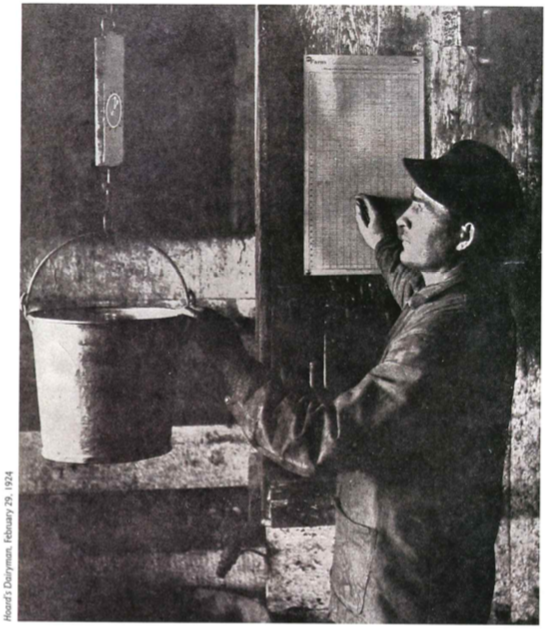Originally published as a blog for the Plymouth Historical Society on January 3rd, 2019
Though Dr. W.E. Taylor’s book, Soil Culture and Modern Farm Methods, is nearly 100 years old, it contains many practical tips that still apply today. This is the fourth of 5 blog posts on this subject. Read part 1 here, part 2 here, and part 3 here.
4. Creating and Managing a Profitable Herd
Any business owner knows this simple fact: if you cannot consistently produce a profit, your business will ultimately fail. Taylor gave many tips to help dairymen maximize their profits with their herd.
Taylor’s first tip focused on the importance of good genetics within the herd. He emphasizes the importance of finding a “pure-bred sire possessing an ancestry of good milkers.” He touted this as “the quickest and most economical way to secure a profitable herd.” This understanding of genetics gave rise to the process of artificial insemination (AI) in the 1930s and is now the most common form of breeding in the dairy industry. However, there is one problem. How do farmers determine that a dairy cow is a profitable producer of milk? Simple, collect data.
Taylor encourages every farmer to keep a record of the cost, kind, and amount of food being fed and the amount of milk and butterfat that each cow produced through the entire year. By doing this, the farmer could easily determine through the years what cows were or were not producing a profit. Those animals that produced less milk at a lower quality would be replaced by a different cow that had the potential to produce more profit. If the farmers kept the low performers, those animals would simply take away from the high profits the rest of the herd could produce inevitably hurting the bottom line.
Today, many farmers have sophisticated computers that can track the milk production of each individual cow. This, however, looked much different in the early 1900s. Taylor recommended that every farmer own the Babcock tester. This revolutionary device allowed the dairy industry to quickly determine the amount of butterfat the cows were producing. This would allow farmers to determine the best producers in their herd by quality, not just quantity, allowing them to gain a better price at the marketplace and determining the effectiveness of their various feed rations. This would also give even more guidance as to what animals needed to be culled. Read more about the Babcock tester here.
The attention to detail and proper collection of meaningful data could be the difference between a profitable farm and a farm that failed completely. Quantitative data allows dairy farmers to make wise business decisions based on facts rather than just human intuition. The development of more sophisticated measures of genetics and milk production continues to be a driving force in the dairy industry today.
